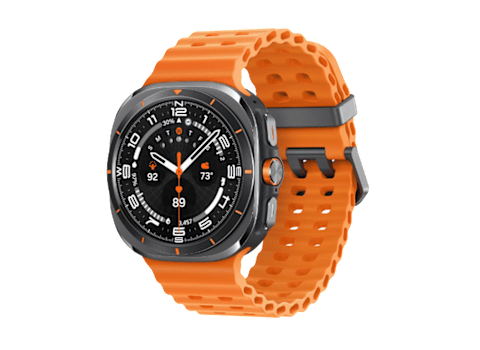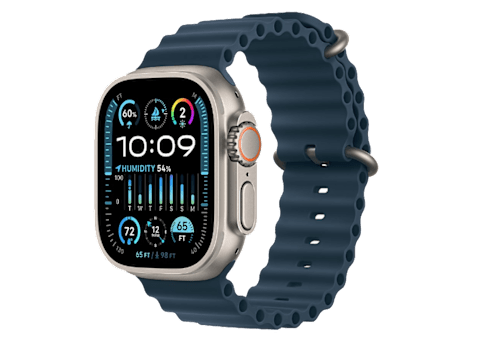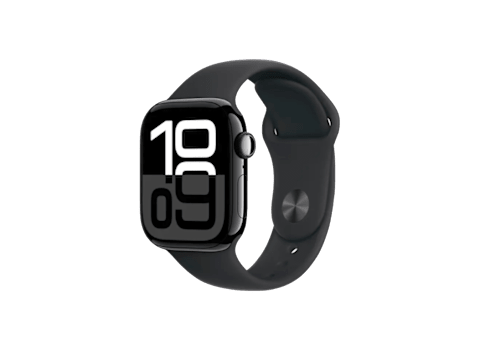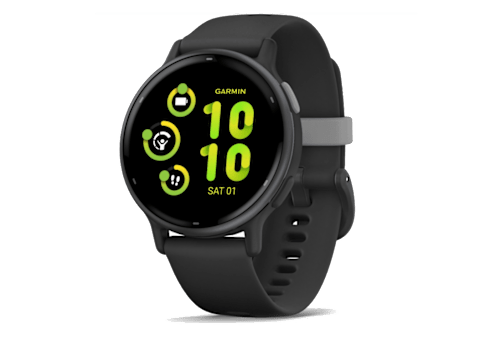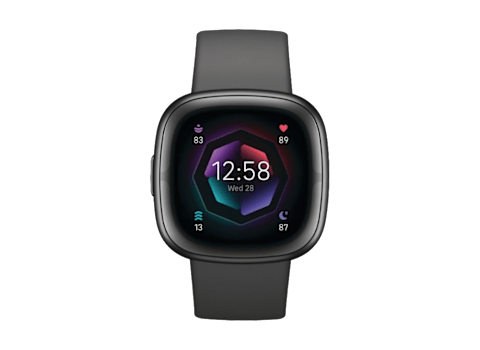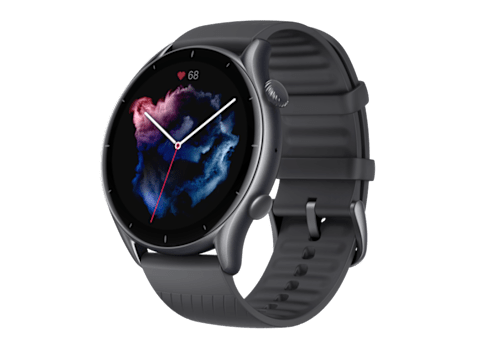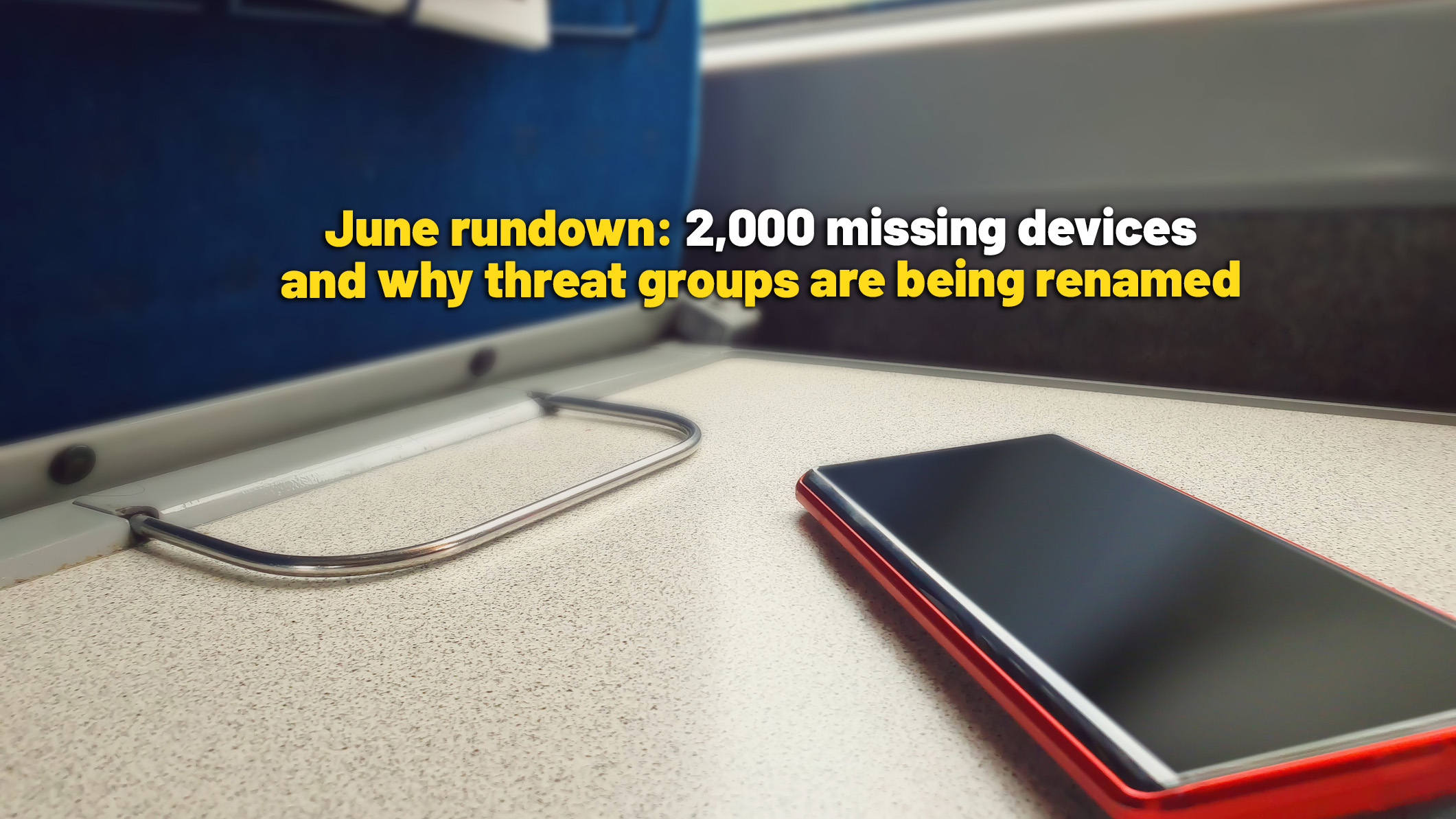Best Smartwatches of 2024, Tested by Our Experts

These top models from Apple, Fitbit, Google, and Samsung offer great performance and a variety of useful features
Smartwatches that do well in Consumer Reports’ testing include models from (left to right) Amazfit, Google, Samsung, and Apple.
By Allen St. John, Courtney Lindwall
Smartwatches can do plenty of things, from answering texts to checking the weather forecast. But increasingly, smartwatches are also becoming powerful tools for helping you monitor and improve your fitness, health, and overall well-being.
That’s why CR’s ratings take into account a watch’s health-related capabilities. These range from the ability to track sleep, stress, or markers of cardiac health—covering both basic heart-rate monitoring and electrocardiogram (ECG) readings. Some watches also act as insightful training partners, logging detailed workout stats and helping you improve your performance over time. Any health- or fitness-related data you get from your watch can also be used to begin a discussion with your doctor.
We test watches on factors such as step count accuracy, ease of use, versatility, waterproofness of the case, and durability of the display.
Consumer Reports is a nonprofit membership organization. All products in our ratings are purchased at full retail.
Samsung Galaxy Watch Ultra
The Samsung Galaxy Watch Ultra is Samsung’s newest premium smartwatch—and a clear response to the Apple Watch Ultra line, both in style and function. It’s compatible with all Android phones but works best with Galaxy devices.
What’s to like: The Galaxy Watch Ultra has all the bells and whistles you’d expect from a top-tier smartwatch. You can tap-to-pay at checkout, use GPS to track your workout routes, and make calls from your wrist, even when your phone isn’t around. It also has a wide range of useful health, fitness, and safety features—like menstrual cycle tracking using skin temperature, sleep apnea detection, and even the ability to give you a holistic daily Energy Score, which can help you know when it’s time to take breaks.
Some of the Ultra’s most heavily promoted features seem less-than-important, though, like its emergency siren or even the purported ability to detect what are known as Advanced Glycation End-products, which Samsung says can give you insights into your metabolic health. But it does all the basics really well, including very accurately measuring step count and heart rate, per our testing.
Unlike the aluminum Galaxy Watch7, the Ultra has a premium-feeling titanium frame. It stands up excellently to our scratch-resistance testing and its bright, colorful display is easily readable in low and bright light. It’s also IP68-rated and survives our dunk test unscathed in the equivalent of 128 feet of water for 10 minutes, which means you can feel confident wearing the watch while tackling your next triathlon.
What’s not to like: The Galaxy Watch Ultra might be a bit bulky and conspicuous for everyday wear, but for those who love its larger 1.5-inch display, that could be more than okay. The price tag is also quite a bit steeper than the Galaxy Watch7’s.
Bottom line: Samsung’s Galaxy Watch Ultra may be designed for adventuring, but it’s also simply a fantastic smartwatch in all the ways that count. Its versatile suite of health- and fitness-tracking features and bright, easily readable display would serve both rugged backpackers and office-dwellers well, as long as they don’t mind the watch’s size.
Samsung Galaxy Watch Ultra (47mm) LTE
Samsung Galaxy Watch7
The Samsung Galaxy Watch7 is the latest in Samsung’s standard smartwatch lineup and a solid all-around pick for anyone who owns a Galaxy phone.
What’s to like: Like the Galaxy Watch Ultra, the Watch7 offers some of Samsung’s latest health, fitness, and safety features—including sleep apnea detection, swimming stroke analysis, and daily AI-enabled Sleep and Energy scores, which make it easier to keep tabs on basic health metrics. It also has more standard features, like automatic workout tracking, heart rate and blood-oxygen level monitoring, and heart rate variability tracking.
It has a bright and easily readable 1.3-inch AMOLED display with Always-On capability. It excels in our scratch-resistance testing and breezes through the immersion check, in which testers check the manufacturer’s water-resistance claims by dunking the watch in the equivalent of 164 feet of water for 10 minutes. It also does an excellent job of accurately measuring heart rate and step count, per our testing.
What’s not to like: Even though Samsung says it optimized the Watch7’s battery performance, the company doesn’t specifically state its estimated battery life, which might mean it’s not particularly impressive. An unimpressive battery life can impact your ability to use a smartwatch’s sleep-tracking features.
Bottom line: Samsung’s Galaxy Watch7 is a sleek-looking and high-performing pick, particularly if you own a Galaxy phone. It likely has all the features you need to keep close tabs on your health and fitness. Plus, the stylish design means you can feel comfortable wearing it just about anywhere.
Samsung Galaxy Watch7 (40mm) LTE
Apple Watch Ultra 2
The Ultra 2 is the latest model in Apple’s high-end smartwatch line, designed for use by athletes, outdoor adventurers, and those who fancy themselves as such.
What’s to like: The Ultra 2 looks and feels much like the original model, but has a brighter screen, zippier processor, and the longest battery life of any Apple Watch yet, according to the manufacturer (up to 72 hours in low-power mode versus 60 hours in low-power mode for the earlier model). Lovers of the classic Apple Watch line will find the Ultra 2 familiar and easy to use, but the chunky titanium case is larger and thicker than that on the Apple Watch and the display is protected by a beefy metal bezel.
Many of the features were designed with adventurers in mind—like a mic array that makes for clearer calls under adverse conditions or the ability to send an SOS signal via a loud siren. The device even has an app that lets it function as a dive computer for scuba enthusiasts. A convenient double-tap feature allows watch wearers to reply to a text or snooze an alarm simply by tapping a thumb and forefinger together twice. (This function is also available on the Apple Watch Series 10.)
The Ultra 2 earns top scores for scratch resistance and readability in low and bright light. It also passed our water immersion test, surviving at the equivalent of 147 feet for 10 minutes. Apple says it can be used for high-speed water sports and recreational scuba diving up to 40 meters. The step-count and heart-rate monitoring performance are both very good.
What’s not to like: While the Ultra 2 does have the longest battery life of any Apple Watch, the model will likely need more frequent recharging than, say, a fitness tracker.
Bottom line: The Ultra 2 is designed for rugged, outdoorsy types, but its durability and performance will do right by any smartwatch wearer—even those with no intention of taking the device into the backcountry. If you already own and love the first-generation Ultra, though, there’s no big incentive to upgrade just yet, as the improvements are subtle.
Apple Watch Ultra 2 GPS + Cellular (49mm)
Apple Watch Series 10
This is the latest iteration of the well-known Apple Watch, with modest performance upgrades.
What’s to like: If you’re a fan of Apple’s watches, the Apple Watch Series 10 won’t disappoint you. The always-on 1.6-inch OLED display is noticeably bigger than that of the previous Series 9, allowing you to read an additional line of text when checking notifications, but, overall, it’s a bit thinner and lighter than last year’s model. It’s also easy to read in low and bright light, according to our testers, and is now available in some pricier, premium-feeling titanium case options, just like the Apple Watch Ultra.
The Series 10 has a versatile suite of health-tracking and safety features—from new sleep apnea detection capabilities to body temperature sensors that allow for menstrual cycle tracking, plus all the usuals like workout and sleep tracking. For swimmers, it has new depth and water temperature tracking. (Thankfully, the watch survived our dunk test, at the equivalent of 164 feet of water for 10 minutes, so feel free to try this new feature out.) For the first time, the Series 10 can also play audio, like music or podcasts, directly from the embedded speakers.
What’s not to like: The battery lasts less than a day per charge, making it difficult to track your sleep consistently.
Bottom line: The Apple Watch Series 10 offers the same reliably high performance and versatility that Apple Watch users have come to expect. Some may enjoy the slightly larger display and handful of improved health and fitness features but expect the watch to work largely like previous models.
Apple Watch Series 10 GPS + Cellular (42mm)
Google Pixel Watch 3
The Google Pixel Watch 3 is the third generation of Google’s sleek-looking smartwatch.
What’s to like: The Pixel Watch 3 has many of the same pros as its predecessor—an elegant design, as well as seamless compatibility with the Pixel phone and full Google ecosystem. In our testing, the model barely beats out the original, thanks to a slightly more robust suite of health features, like automatic workout detection and heart rate variability tracking. It also can give you a more holistic look at your health, with daily Readiness and Sleep scores. The Pixel Watch is also catching up to other high-end smartwatches with strong scores for ease of use, readability in bright and low light, and heart rate accuracy, though its performance in our scratch resistance testing was not quite as impressive as other smartwatch models. It also comes with six months of Fitbit Premium.
What’s not to like: The battery lasts 24 hours with the always-on display or 36 hours in Battery Saver mode, according to the manufacturer. Still, needing to charge it daily may prevent you from making the most of features like sleep tracking or battery-draining GPS tracking. And although its Fitbit-driven health features are more versatile than before, they still lag a bit behind those of Apple and Samsung models.
Bottom line: The Google Pixel Watch is a stylish, high-performing model that’s a good fit for people with Google Pixel phones or lovers of the Google ecosystem.
Google Pixel Watch 3 (41mm) LTE
Garmin Vivoactive 5
The Vivoactive 5 is a smartwatch from a company known for its performance-oriented fitness trackers.
What’s to like: The Garmin Vivoactive 5 is more stylish for everyday wear than some of Garmin’s previous offerings, which looked and felt like fitness trackers, and is compatible with both Android phones and iPhones.
The Vivoactive 5 isn’t quite as decked out as some of the highest-tier smartwatches on the market, but it still manages to pack in an impressive amount of functionality at a fairly affordable price. You can use GPS to track your workout routes and NFC technology to tap-to-pay at checkout. You can track your sleep and then improve your zzz’s with data-driven sleep coaching. The Vivoactive 5 also features a long claimed battery life of up to 11 days and earns a top score in our health features rating, as well as versatility, ease of use, and readability in low and bright light.
What’s not to like: The Vivoactive 5 performs well in our tests, but it doesn’t quite reach the top of our ratings in step-count performance, heart-rate performance, or on our scratch test.
Bottom line: If you’re more interested in beating your personal best than emptying your inbox, the fitness-oriented Garmin Vivoactive 5 could be a smart choice.
Garmin Vivoactive 5
Fitbit Sense 2
What it is: A fitness-oriented smartwatch likely to please Fitbit fans.
What’s to like: If you have a Fitbit fitness tracker, you’ll probably feel at home with the Fitbit Sense 2, especially if you see the benefit of the watch’s large display. The model works with both Android phones and iPhones, although it’s probably a better option for the Android user.
The Sense 2 has built-in GPS, which allows you to go for a run or a ride without hauling your smartphone along, plus a blood oxygen sensor, which enhances its sleep-tracking capabilities, as well as sensors for stress monitoring. Our testers find that it’s a solid performer when it comes to ease of use and step counting and its health features score is above average. The Sense 2’s claimed six-day battery life is better than that of most smartwatches.
What’s not to like: The Sense 2 still looks a bit like a fitness tracker, so it might not be your first choice for an important meeting or a first date. It also has a lot of the same limitations as a fitness tracker, with a limited array of available apps. Our testers report that the Sense 2’s heart rate accuracy is only average. With a $300 price, it’s competing with higher-rated models like the Apple Watch SE, the Google Pixel and Samsung’s Galaxy watches.
Bottom line: It’s probably best to think of the Sense 2 as a fitness tracker with bonus features, especially considering its price.
Fitbit Sense 2
Amazfit GTR 3
What it is: An attractive smartwatch that won’t break the bank.
What’s to like: Compatible with both Android and iPhone models, the GTR 3 has two big things going for it—the price is very low, and the battery life is really good, at a claimed 21 days. (The newer GTR 4 model also performed well in our tests, but got a significant price bump.) The GTR 3’s case design is sleek, channeling some higher-end analog watches, and the touchscreen display is bright and easy to read. The model also features stand-alone GPS, which is useful when you’re out running without your smartphone. Our testers give the watch solid marks across the board, except for its heart-rate monitoring, where the Amazfit’s performance is just average.
What’s not to like: As you might expect for the price, the fitness features of the GTR 3 are pretty basic. The model also lacks connectivity with third-party apps like Spotify.
Bottom line: The Amazfit GTR 3 is legitimately cheap but doesn’t look it and, despite the price, is a solid performer.
Amazfit GTR 3
Consumer Reports is an independent, nonprofit organization that works side by side with consumers to create a fairer, safer, and healthier world. CR does not endorse products or services, and does not accept advertising. Copyright © 2024, Consumer Reports, Inc.
Source link


